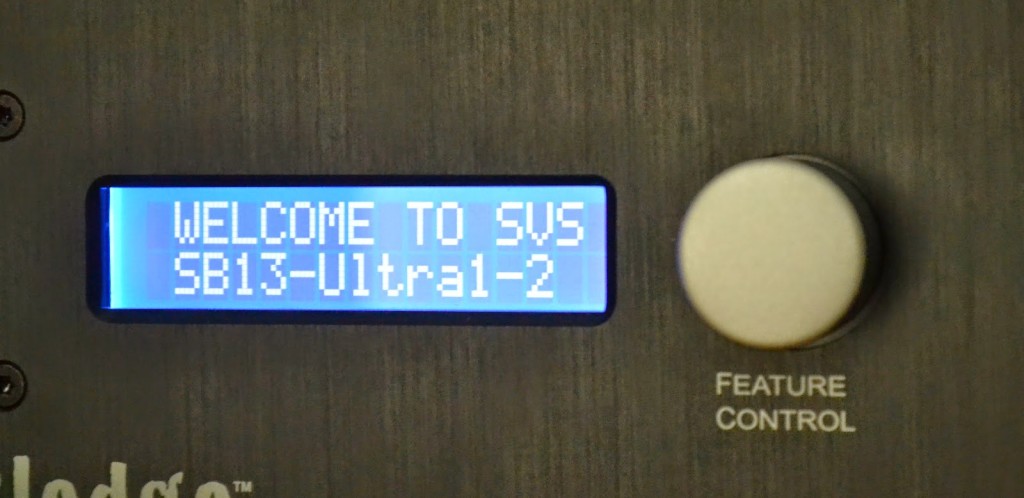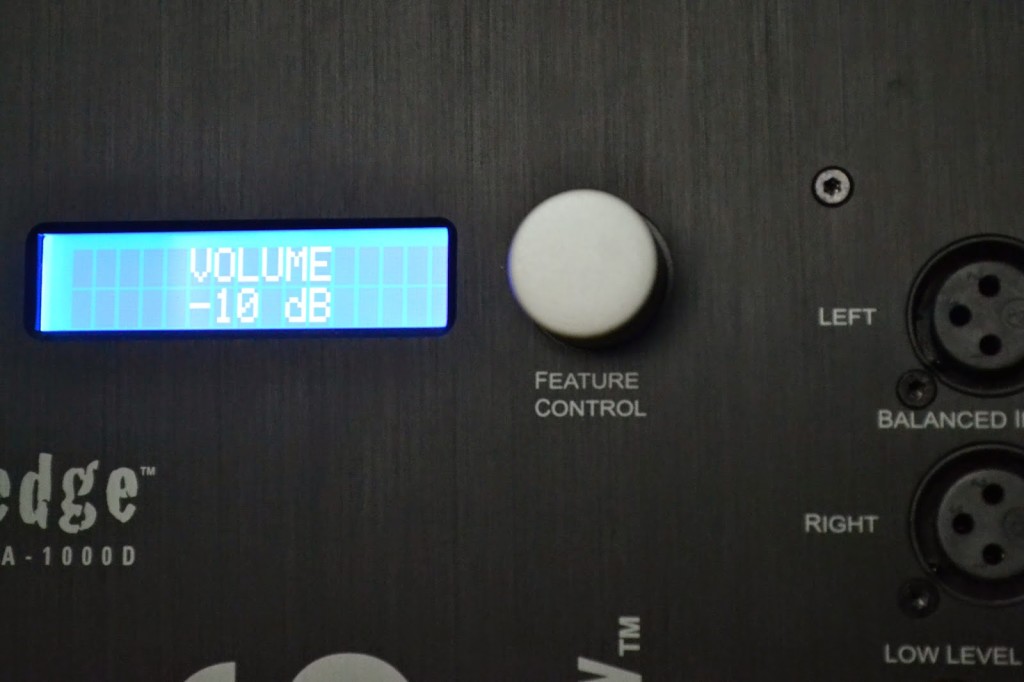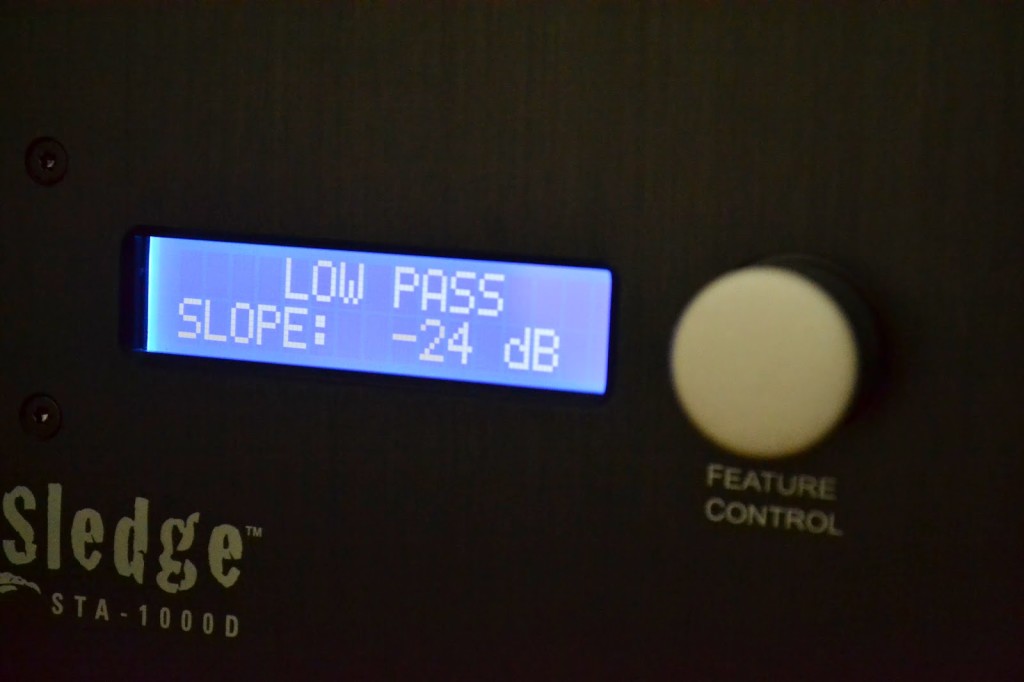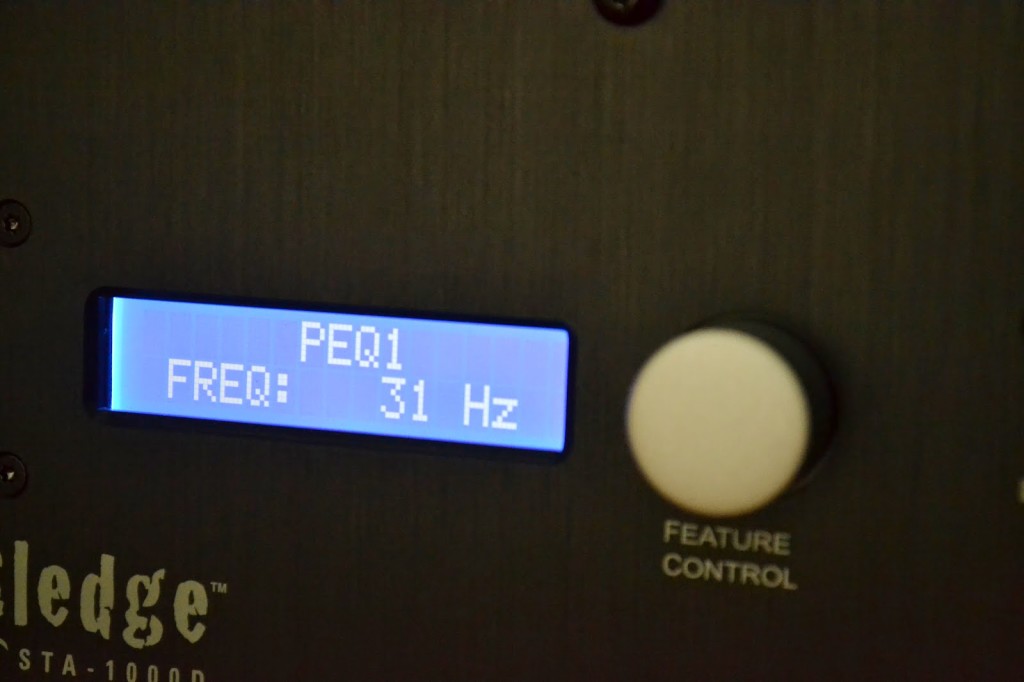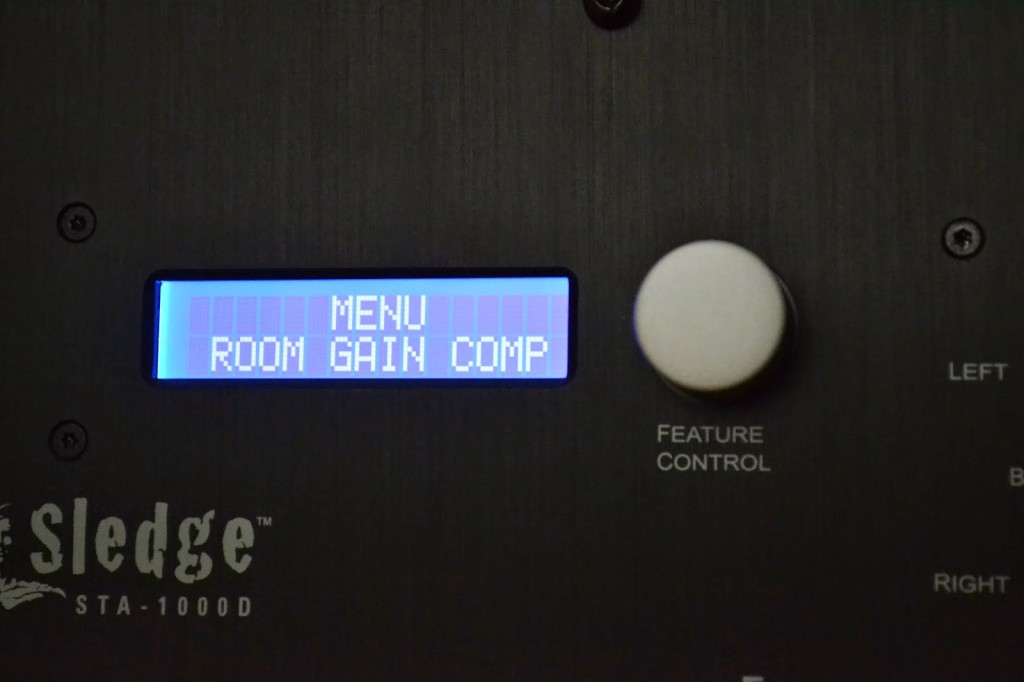The SVS SB13-Ultra has a single power on/off switch. When the subwoofer doesn’t
sense an audio signal for 15-20 minutes, it will place itself into an
auto-power standby mode. When your AVR
or pre-pro sends a signal to the SVS SB13-Ultra, the unit will automatically
come out of auto-power standby mode and become fully operational. There is no 12v trigger feature to turn the
sub on or off with your pre-pro or AVR.
Personally, I much prefer the auto-standby feature and it’s
a feature that I’ve used with my Revel B15 sub for
years. SVS recommends that if the
subwoofer will not be used for prolonged periods, then the subwoofer should be
physically switched off.
connectivity options. Unlike many subs,
which only feature a mono LFE input, the SB13-Ultra offers you the option of
left and right stereo inputs. Thus, if you wanted to use the SB13-Ultra sub
in a two-channel setup with a stereo preamp or integrated you could use the
SB13-Ultra for that task and manage all the high and low pass crossover
settings directly in the sub.
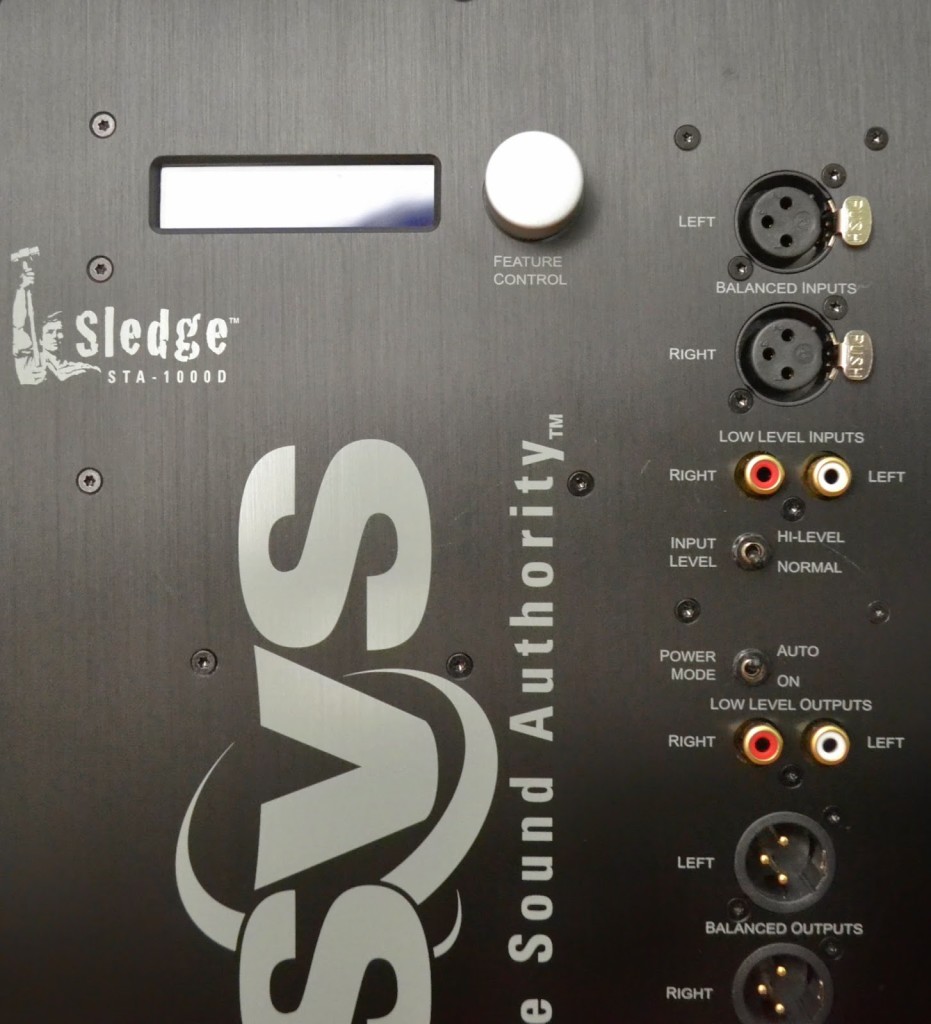 |
| The SVS SB13-Ultra features a host of connectivity options |
a typical home theater application, then you can simply connect your preamp or
receiver to either the left or right channel inputs. They are identical and summed
internally.
are selectable with a single knob.
Using
the rear panel is fairly intuitive. You rotate the knob clockwise or counter
clockwise to navigate between options; push and click the knob to select a
sub-menu or change an items value; and double-click the knob to exit any
sub-menu and return to the top menu.
being 0db. If you’re connecting to
your AVR or pre-pro you should calibrate your sub with an SPL to read 75dB at
the listening position, which will normally yield a setting lower than the
default 0dB setting.
continually variable, you can set it in 15 degree increments from 0 to 180
degrees. This should be more than enough
for pretty much any setup.
and pro-level (4Vrms) line level inputs. The line level input is manually selectable with the
input level toggle switch. The default
setting is normal or the consumer-level 2Vrms.
This specific option isn’t a feature I’ve typically see in
consumer-oriented subs.
pre-pro and use all the bass management options in those units. Nevertheless, the SB13-Ultra has additional
features that will be of interest to users in unique installations, pure
two-channel setups, or who want further control over what may be found in their
AV receiver:
or 24dB/octave slope. The high and low
pass pass frequency options are pre-set at 31.5, 40, 50, 63, 80, 100, and
125Hz. By default the high pass and low
pass filters are disabled.
the main speakers are not being run full range and the subwoofer is located behind
the loudspeakers. The High Pass Delay
allows you to delay the input signal being sent from the line level outputs in
1ms increments from 0ms to 10ms in 1ms increments. For every foot that the sub
is located behind the main speakers, you add 1ms of delay. The inclusion of the High-Pass Delay option
can help improve the time-domain integration of the speakers and the sub. This is a slick option to have.
SB13-Ultra that can help reduce any standing wave modal peaks. The PEQ allows you to set frequency, level,
and filter bandwidth (abbreviated as Q). You can set the PEQ to target
frequency anomalies at 31.5, 35, 40, 46, 50, 56, 63, 70, 80, 90, 100, 112, and
125Hz. You can adjust he filter level to
be between -12 and +3db, and Q to be
2.0, 2.4, 2.9, 3.6, 4.8, 5.7, 7.2, 9.6 and 14.4. You’ll need to take subwoofer frequency response measurements at the listening position with a measurement system like Room EQ Wizard in order to use the PEQ effectively.
bass response (aka, too much bass!) that can make the sub sound bloated or
bottom-heavy through an effect called room gain. Although the SB13-Ultra’s
back panel offers a room gain compensation feature, the engineers at SVS are
quick to note that the SB13-Ultra was designed to work with and complement
available room gain. Thus, in the case
of the SB13-Ultra sub, it’s almost never need and actually not
recommended for this model.
Ed Mullen at SVS about the SB13-Ultra sub when used with Anthem’s
ARC. ARC is Anthem’s
own room correction which has it’s own room gain setting. Because the SB13-Ultra sub was designed to
complement available room gain, Ed recommended that the room gain function in
ARC be disabled (set to 0). By disabling
the room gain in ARC, the SB13-Ultra could then take advantage of any room gain
to enhance the in-room bass extension.
Ed Mullen at SVS was kind enough to point me to an article on the SVS web site http://www.svsound.com/t/sealed-vs-ported
where the topic is covered along with the differences between sealed and ported
subs. Thanks Ed!
omission with the SB13-Ultra that I should note. Although feature rich, the SB13-Ultra has no
native, one-touch, automated room correction.
Because room correction is now ubiquitous in modern receivers and
pre-pros, this is really a non-issue for a vast majority of users. To me personally, this is a non-issue.
external box that performed automated room correction. When Audyssey introduced their MultiEQ XT32
and SubEQ HT solutions into may receivers and pre-pros, the AS-EQ1 was
discontinued. Those newer versions of
Audyssey essentially duplicated the functionality of the AS-EQ1.
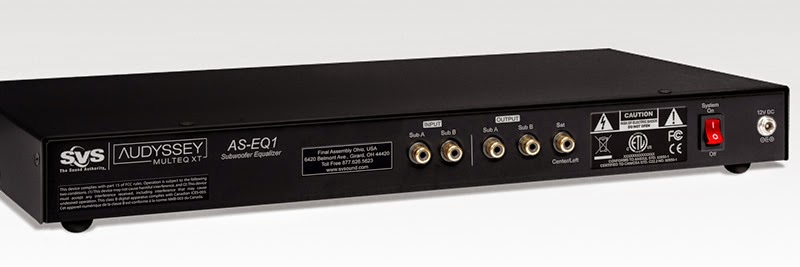 |
| The SVS AS-EQ1 was an external bass management EQ solution featuring Audyssey Multi-EQ XT. You can still pickup used models online. |
want to delve into the options available in the SB13-Ultra, I have two
recommendations: First, you can purchase
the Anti-Mode 8033 Automatic Subwoofer Equalizer (http://www.dspeaker.com/en/products/anti-mode-8033.shtml). It’s a bit expensive but it’s
a great product. Secondly, you can look
for a used AS-EQ1 online.
subwoofer promises to fit into just about any home theater or two channel environment.


